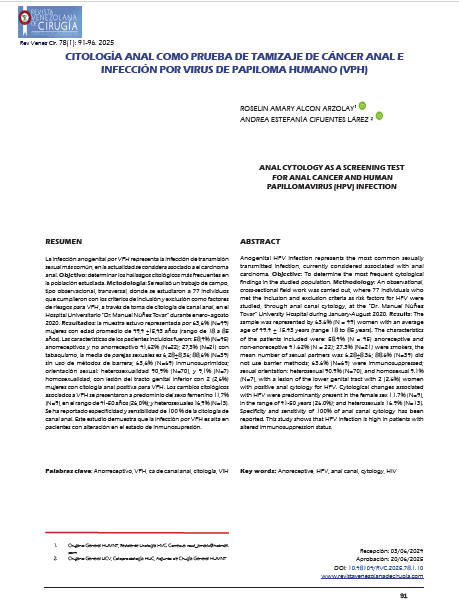Abstract
SUMMARY: anogenital HPV infection represents the most common sexually transmitted infection, especially in the young population; it is currently considered anal carcinoma associated with this pathology. Objective: to determine the most frequent cytological findings in the studied population. Methodology: an observational prospective, cross-sectional field work was carried out, where 77 individuals who met the inclusion and exclusion criteria as risk factors for HPV were studied by taking cytology from the anal canal at the “Dr. Manuel Nuñez Tovar” University Hospital during January – August 2020. Results: the sample is represented by 63,6% (N=49) women with an average age of 49,4± 15,43 years (range 18 to 85 years) the characteristics of the included patients were 58,4% (N=45) anoreceptive and non-anoreceptive 41,62% (N=22); 27,3% (N=21 )with smoking, the mean number of sexual partners are 6.28= 8,36 partners. 88.6 (N=39) without barrier methods, 63,6% (N=69) immunosuppressed. Sexual orientation: heterosexuality 90,9% (N=70), and 9,1% homosexuality, with lesion of the lower genital tract with 2 (2,6%) women with positive anal cytology for HPV. Cytological changes associated with HPV occurred in the range of 41 to 50 years (26,0%), predominantly in females 11,7% (N=9) and heterosexuals 16,9% (N=13) specificity and sensitivity of 100% have been reported for anal canal cytology. This study shows that HPV infection is high in patients with altered immunosuppression status.

This work is licensed under a Creative Commons Attribution-NonCommercial 4.0 International License.
Copyright (c) 2025 REVISTA VENEZOLANA DE CIRUGÍA

